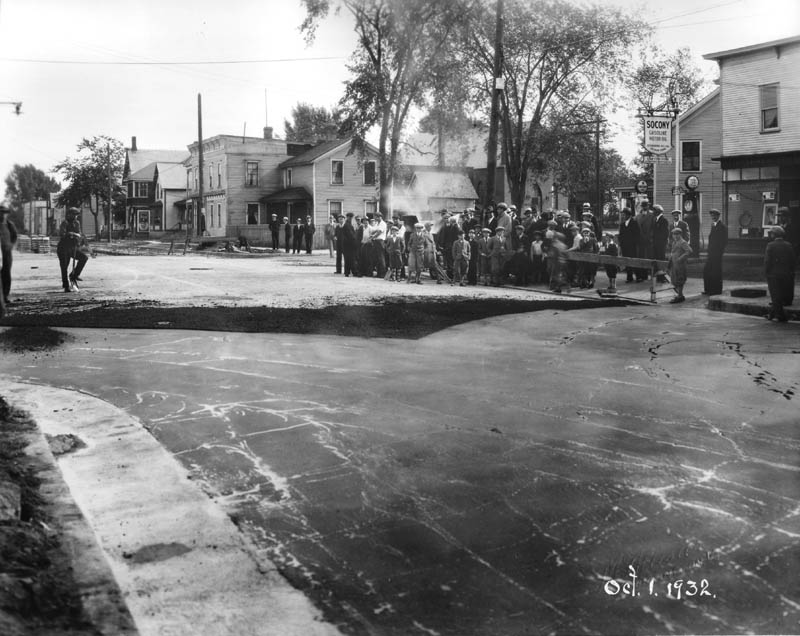

|
||||||||||
 |
||||||||||
It’s a Saturday afternoon in 1932, and everyone is crowded on the corner to see their neighborhood being paved. The exclusively male crowd is gathered on the corner of Archibald Street and North Winooski Avenue in front of the Star Feed Store. At the time, Hyman Goldberg ran the feed store where one could get the fuel, be it hay, grain, coal or oil, to feed any type of beast.1 The store at 296 North Winooski Avenue is housed in a two-story vernacular Italianate-style, woodframed building with simple angled cornice brackets for decoration. Large plate-glass windows provide a stage for feed store displays, and if one looks closely, an advertising card bearing the image of a fashionable woman of the period looks out over the gasoline pumps. The price of Standard Oil Company, or SOCONY, gasoline is 13 and 9/10 cents per gallon for regular, and 16 and 9/10 cents for high test. |
Click to view this street scene in 2005
Back to the intersection between North Winooski Ave. and Archibald St.
North Winooski Avenue North of North Avenue
Historic Burlington Project Burlington 1890 | Burlington 1877 | Burlington 1869 | Burlington 1853 | Burlington 1830 Produced by University of Vermont Historic Preservation Program graduate students in HP 206 Researching Historic Structures and Sites - Prof. Thomas Visser in collaboration with UVM Landscape Change Program Historic images courtesy of Louis L. McAllister Photograph Collection University of Vermont Library Special Collections |